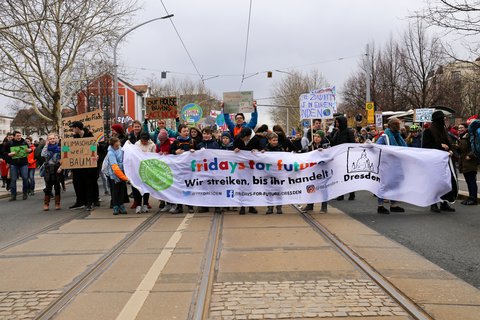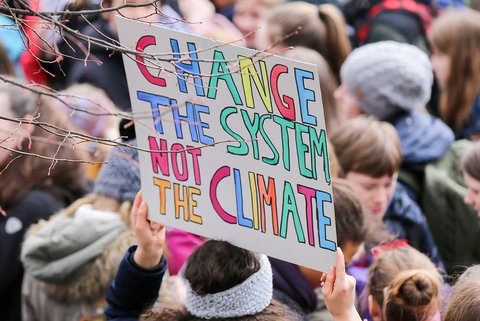“The ecological crisis,” writes Beuys, still in the time of the Cold War and a divided Germany, is similarly harbored in the “state capitalism” of the East as in the “private property-based capitalism” of the West. An alternative able to stage a resistance in the face of either of these destructive systems is called for. As antithesis to the dictum of Margaret Thatcher’s, that “there is no alternative,” Beuys pointed to a multitude of concrete, already-tried alternatives. To Beuys, art was the main arena as well as the motor for thinking up such alternatives, for discussing them and putting them to practice. Within Beuys’s wide range of artistic activities and political engagements, ecology, environmental protection and sustainability were never a mere sideline. That he is considered a companion and forerunner to the Green Party is evidenced by his 1978 pamphlet, “Appeal for an Alternative,” where he calls for a re-envisioning of society away from either capitalism or communism. Already an artist of international renown at the time, Beuys would visit the GDR only once, for a show and live action at the Permanent Mission of the Federal Republic of Germany in East Berlin. Even so, his art and social-political conceptions were to prove influential even among the artistic and intellectual circles of the GDR.
Together with his stance on the energy and transportation turn, Beuys’s decidedly anti-capitalist appeal for a system overhaul was in fact pivotal to the democratically-oriented movements of the kind we witness today: so with Extinction Rebellion, for example, known for its stark visual presence; Ende Gelände, the anti-coal activist group; or yet the youth movement Fridays for Future. As regards the Green Party, large swaths of these activist groups view it with some ambivalence. The established party, which itself, initially, arose from social movements, has long forgone whatever radical potential it once held, having lost touch with a program for actual change and a greater vision for society – to offer one possible reading of that dispute. In short: it went missing in realpolitik, in the daily business of politics, away from revolutionary ideas.

Wir streiken, bis ihr handelt, Fridays For Future-Demonstration in Dresden, 15. März 2019.
© Ralf Lotys / Wikimedia Commons / CC-BY-4.0
The struggle for social-political alternatives, for environmental protection and the anti-nuclear resistance became the driving force in the environmental movements of the 1970s. It is against this background that we should read Beuys’s “Appeal” from 1978. These movements, in turn, would congeal into political-party structures following their formation in the 1970s and 1980s; such that, nowadays, activists have come to consider the Green Party – the result of a fusion, dating from the early 1990s, between the West German Green Party and the East German Bündnis 90 – more as an ancient holdover from the time of the anti-coal resistance and post-reunification civil rights movement, rather than as powerful ally in the forward-thinking #systemchangenotclimatechange.

Change the system not the climate, Fridays For Future-Demonstration in Dresden, 15. März 2019.
© Ralf Lotys / Wikimedia Commons / CC-BY-4.0
Present-day movements the likes of Fridays for Future rely on local, national and international networks of teams and organizers. Democratically-oriented, these climate movements often knowingly function without an executive board, an official spokesperson or appointed representatives – a mode of operation that, in and of itself, calls into question the focus on individual figures in media coverage. Such decentralization and mistrust in leadership, inherent in these movements, stand in stark opposition to the personality cult we tend to associate with Beuys.
Beuys was famous for highly contentious public appearances and remarks that drew controversy. Critics may have pointed to his past in the ranks of the National Socialists, but “Beuysians” preferred to see in him the charismatic social reformer. Beuys did in fact slip into the role of politician for a little while – at least as candidate. We also know of a campaign ad that featured an image of his creation, which was designed by Johannes Stüttgen, a student of his’. Showing a hare and a toy soldier, it reads: “In this election: the GREENS”. This attests to his eagerness to take part in party politics from the visual side, of employing artistic means to this end. To Beuys, beyond initiating discussions and debating alternatives, art's function also lied in its visual impact, its “Bildwirkung”. This applies to “actions on the ground” as much as the campaign ad, which never got used in the end. Eventually, as all his political ambitions within the party system proved unsuccessful, he pulled away from this realm.
Beuys regarded art institutions as a means for realizing the visions he had for society. A major exhibition, documenta 5 (1972) served him as platform for staging his Office for Direct Democracy by Referendum at Kassel’s Museum Fridericianum, where the titular Informationsbüro was located in direct proximity to the museum’s actual information booth. Effectively relocating his office from the Kunstakademie Düsseldorf to the premise of the show, he welcomed in guests for discussions for over a hundred days. The debates of the day, local and international, had found a resonance in this project which put artistic-symbolic utopias and concrete-social proposals up for debate.
Another project he showcased at that year’s documenta was his vision for an open-admission higher education institution for creativity and interdisciplinary research, an institution that would later materialize as The Free International University. Especially following the student movements of 1968, his idea of founding an alternative institution took shape as a reaction to the administrative policy at the Kunstakademie Düsseldorf, of which he was highly critical. Ever since he was appointed professor in the early 1960, Beuys was at a stalemate with the institution’s reactionary administration, especially over his intention of opening his class to all interessees, doing away with admission quotas. This eventually led to his temporary dismissal in 1972.
A large scale project, 7000 Oaks – City Forestation Instead of City Administration exemplifies Beuys’s artistic engagement with environmental activism and ecological awareness at its most distinct. Beuys provided for 7,000 to be planted in Kassel in 1982, in what reads as a sustainable art project in a twofold way: On the one hand, by the resistance it stages to “the concrete deserts” that, promoted by city planners in post-war Germany, were propagated as a car-friendly model for the future; on the other, by posing the question of artistic sustainability and organizational solutions that carry a social impact, one that lingers beyond the lifespan of the artist’s. Essentially a work of public art, the project was fully completed only after Beuys’s death, having been maintained since by a non-profit charged with its upkeep. The Free International University oversaw initial coordination on the project, which was largely funded by private donations.
Beuys’s University – a nonprofit from the legal standpoint – was supposed to operate as an alternative higher-education institution both in its research capacities and the function it would have within society. The institution Beuys had envisioned was not an actual school or university, complete with classrooms and a faculty, but rather a networked structure meant to spread across Europe and beyond. Beuys was hoping for an “internationally sprawled” organization – of the sort that, nowadays, brings the term “think tank” to mind.
The main goal of The Free International University was to establish an entity active in research, communication and envisioning the future – an institution that, all the while, would come to occupy its own place within the existing educational system. After having long operated without a fixed venue, the university officially ceased operations in the late 1980s. However, it lives on in a multitude of projects that are both local and more broadly interconnected, among them The Silent University by artist Ahmet Öğüt, various political initiatives and the university’s publishing house, as well as outposts in Amsterdam and cities in Germany. Clearly, the very idea of a sprawled-out, internationally-networked organization has had an impact going well into the present, even as the decentralized, democratically-oriented groups of today such as Fridays for Future favor a more nuanced perception as regards leadership, personality cult and activism – all the more so given the demographic shifts that have been occurring since, the reality of a post-immigrant society, and the ongoing threat of multiple crises on a global scale.